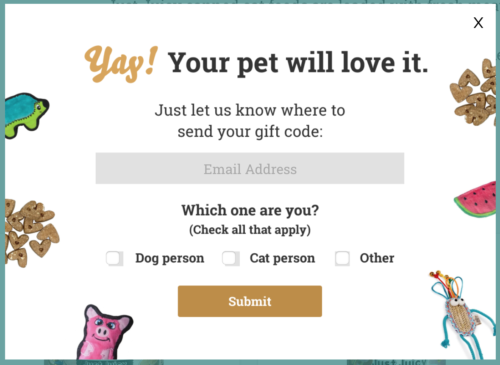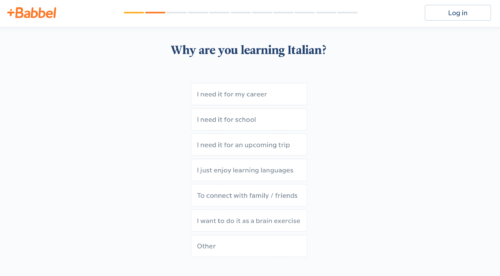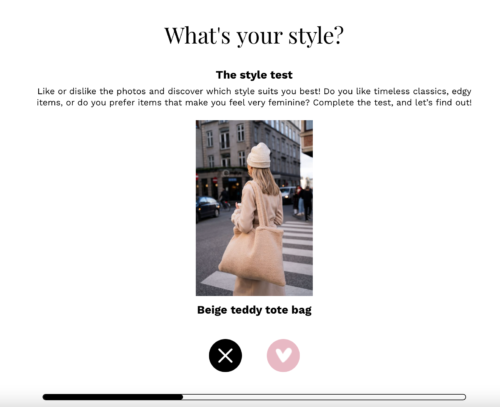Zero-Party Data is the information a customer intentionally shares with a business. This data collection often happens through quizzes, registrations, questionnaires, polls, etc. Aside from helping the user get personalized recommendations, it also helps the business build a cost-effective, accurate, and transparent marketing strategy.
Whether you are a business owner or a business developer, it’s essential that you know about zero-party data, as well as first-party, second-party, and third-party data.
In today’s digital world, data is one of the biggest drivers of successful business and marketing growth. Different data types result in different benefits, and their effectiveness will depend on your current situation and goals.
To help you understand these concepts better, we are going to share everything you need to know about it. We’ll explain how you can use it to your advantage and why it is one of the most valuable types of information you can integrate into your business strategy.
What Does Zero-Party Data Mean?
Zero-party data is the information that is given by customers voluntarily. In other words, it is data they intentionally share with a company in order to receive some kind of benefit. This information allows the business to better understand who they’re serving.
It might include demographic information, customer pain points, satisfaction ratings, etc. Once they have this data, businesses can give personalized offers or targeted discounts and offer products and services their customers need. It is mutually beneficial.
Why is It Important?
Now that you know what is zero-party data, you should know why it is important. And we might say this kind of data is very important for all businesses, but especially for eCommerce stores. Here’s why:
- The data collected is highly accurate since the customer provides it directly.
- The information provided is relevant since customers tell your business exactly how they want to be interacted with.
- It solves customer privacy issues from other data collection forms like third-party data collection via cookies.
- It’s cost-effective, especially considering most companies already use this kind of data collection and don’t need to pay to get this data.
- It offers transparency to your customers since they are freely providing their data.
- It improves customer experience by giving users exactly what they need and want.
In addition to these bullet points, this kind of data can significantly increase customer retention, build customer loyalty, increase customer lifetime value, boost profits for your business, and much more.
How to Collect It?
Collecting it is not always an easy task. Not all customers will want to provide information about themselves, their preferences, and purchase intentions.
However, if you’re creative enough, you can make this process a pleasant experience for your customers, which improves your chances of collecting more data. Here are a few options:
- Registrations
- Quizzes
- Games
- Questionnaires
- Surveys
- Social media polls, surveys, and posts
According to this report, a strategy that highly increases your chances of collecting this type of data – to 71%, to be specific – is to inform them how this data will be used to help them get more personalized recommendations from brands.
Of course, not every customer will be willing to share all of the information a business wants to know about them. That is why you need to consider other types of data collection like second-party data or third-party data.
How to Use This Kind of Data for Your eCommerce Business
A big question is what to do with all this data. How can you use it effectively?
There are many ways you can use this information, and platforms like Verfacto can help you turn this data into actionable insights so you can do something with it. Here’s what you can do with it:
- Build a customized website experience, making recommendations based on users’ preferences.
- Send alerts, notifications, or emails when a specific product – or product range – is on sale, is back in stock, etc.
- Offer discounts when you need to incentivize a purchase.
- Make smarter pop-ups and push notifications based on data.
- Target your ads better by knowing exactly what your customer needs.
Examples of Zero-Party Data Strategy
Tomlinson’s
An excellent way to collect data is by offering something for free for your customers, just like Tomlinson’s does. Their pop-up provides a gift on your first purchase for new customers but asks you whether you’d like your free treat to be for a cat or a dog.


The second screen shows another simple question that helps segment the audience and offers them a chance to have a more personalized experience.
Babbel
Another business that does this very well is Babbel, the language learning app. When people sign up, they are asked a few questions about themselves, e.g. the reason why they want to learn a new language, what level do they hope to achieve, how much time they can study per day, their age, etc.

My Jewelry
This jewelry brand offers their customers a fun way to share their data. They have created a simple test where users choose their jewelry preferences. The company collects these customer preferences in the form of an interactive quiz, and to receive their results, the user simply needs to provide their email address. This is a really cool way to get data!

If you want to dive into the different types of data a little bit further, feel free to check out the articles we’ve written about the topic:
FAQs
What is the Difference Between Zero- and First-Party Data?
As mentioned previously, zero-party data is the information users willingly and proactively share with you via forms, quizzes, etc. First-party data is information that you collect passively, on your website based on various behaviors.
Both ways of collecting data are based on getting information directly from the customer, with no intermediaries. The difference is in how this data is collected:
- Zero-party data: Information actively provided by the user through surveys, questionnaires, quizzes, registrations, etc.
- First-party data: Information passively provided by the user through behavior on the website, e.g. how much time was spent on a page, click frequency, interaction with links and items, etc.